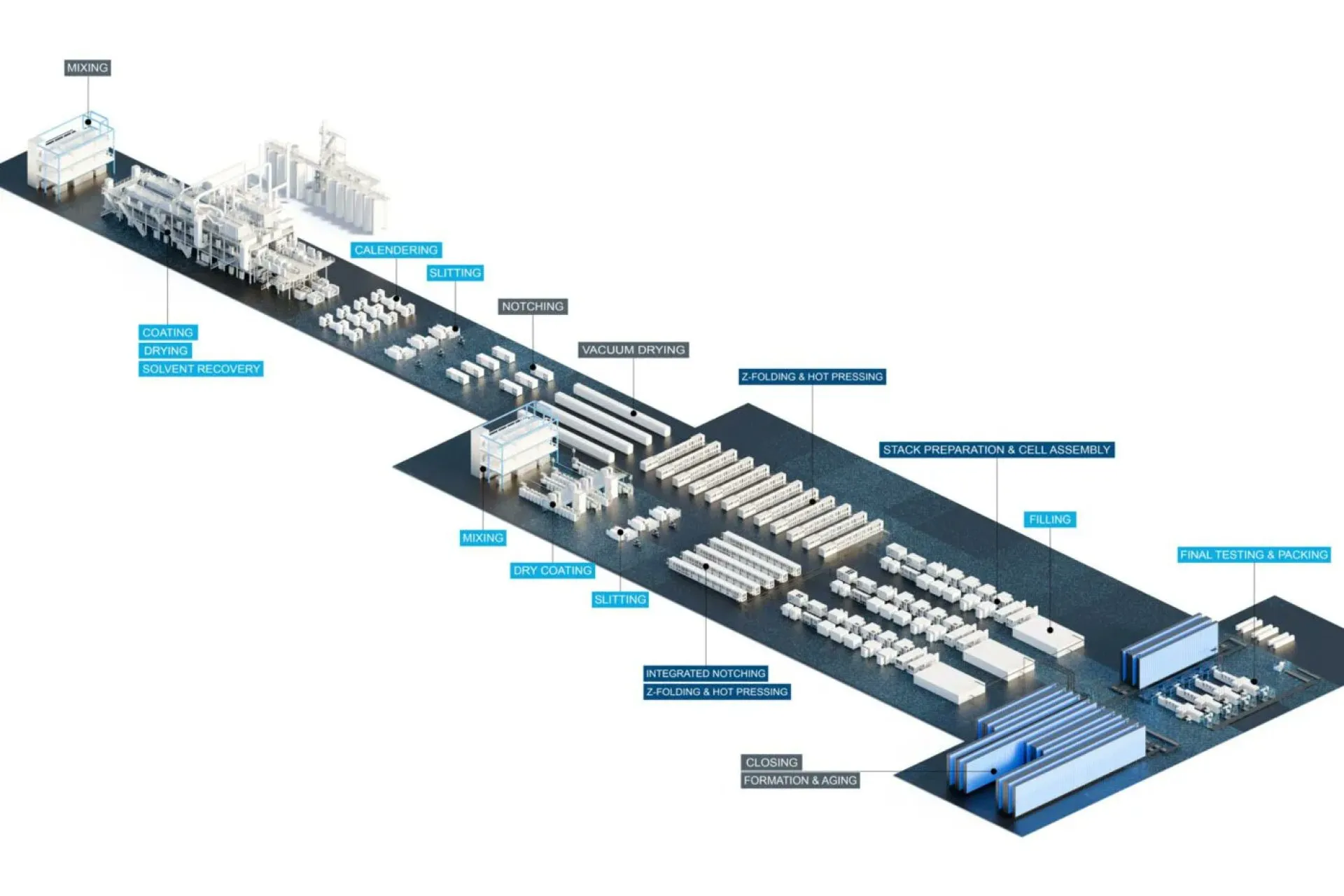At the Battery Show Europe, which started yesterday in Germany, one of the standout products was the battery production system designed by Dürr and Grob using dry coating technology.


Traditional lithium-ion battery production requires chemical solvents and massive drying ovens for cathode and anode active material production.
Dry coating technology enables the calendaring of active material onto current collector foils without the need for chemicals or oven drying.
.jpeg)
Dry electrode cells, which Tesla is also working on, result in less structural damage to the material, up to 50% reduction in energy consumption, higher production in a much smaller factory footprint, and reduced harmful emissions due to lower chemical use.
When Dürr’s dry electrode coating equipment is combined with Grob’s ‘Z-fold’ separator folding system, energy consumption decreases, and up to twice as many cells can be produced in the same factory space.
.jpeg)
The Z-fold method involves wrapping the anode and cathode with a single, uncut separator, significantly increasing production speed and positively impacting cell lifespan.
Tesla is already known to produce its 4680 cells using the dry coating method. Companies like Volkswagen, LG, and TDK Corp are also investing in this production method, which reduces costs and enhances the sustainability of the battery industry.